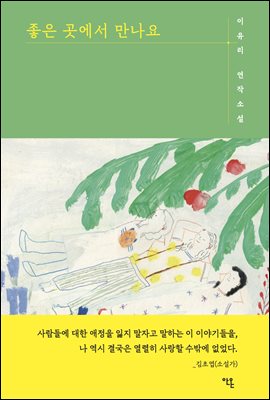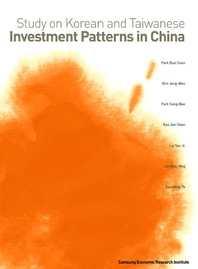

- �ǹ߰ȱ��� ù���� : �ڿ����� ���ư���
�ڵ�â �� | ���Ϲ̵��


- ���� ������ ������
������ �� | �ȿºϽ�
.jpg)

- ������
�˺��� ī�� ��/����ȯ �� | ��������
- Ȩ >
- ���ͳݺ���Ͻ�


After industrializing in the 1960��s, Korea and Taiwan economies continued to grow rapidly. However, after the mid-1990��s, when China started to integrate into the global economy, Korea and Taiwan��s growth and investment rate dwindled. At the same time, employment (Korea) and production (Taiwan) in the manufacturing industry have been decreasing as well. This economic decline is at least partially due to the emergence of the growingChinese economy. Because China��s competitiveness in exports is strengthening and the inflow of foreign direct investment (FDI) is expanding, China is depriving Korea and Taiwan of market share in their main export markets, including the United States.
Further analysis of investment in manufacturing and the ensuing relationships between China and both countries is required. After the 1990��s, Korean and Taiwanese companies have been expanding their investment in China aggressively. This aggressive investment in China is leading to deindustrialization in Korea and Taiwan. Forboth Korean and Taiwanese companies, investment in China reinforces the increase in Chinese exports by forcing small parts and intermediate goods to be produced in their own countries instead of in China. Thus, Korea and Taiwan��s investment in China demonstrates contradictory characteristics.
This study analyzes the effects and results of Korean and Taiwanese investments in China. It also analyzespossible areas where the two countries can cooperate with each other. To achieve these goals, theSamsung Economic Research Institute (SERI) and the Taiwan Institute for Economic Research (TIER) conducted a study jointly. SERI researched the historical growth of Korea and Taiwan��s economies as well as the current challenges Korea and Taiwan face.
Analysis of Korea and Taiwan��s investment in China showed unexpected results with Korea and Taiwan having more similarities than differences. In the beginning, both countries started to invest in China to utilize low-cost labor and exported products to industrialized countries like the U.S. Accordingly, China contributed to the tremendous development of the Korean and Taiwanese economies. Exports greatly increased the supply of parts and intermediate goods from Chinese subsidiaries, while trade among vertical industries in the trade structure has expanded. Simultaneously, however, China��s industrial foundation has strengthened and slowed down growth of exports in parts. As China��s industrial base grows in strength, both countries�� investments will face new challenges. Native investment, moreover, has increased the independence of manufacturers of small parts and intermediate goods in China. Accordingly, SERI has found that Korea and Taiwan��s export industry in China will likely
decelerate.
This project is a joint study conducted by SERIand TIER. Results have been further refined by convening a joint presentation on the study in both countries. We hope this book will serve as a useful resource to bothKoreans and Taiwanese who are interested in foreign investment in China
���� : Park Bun Soon et al.
* This book is a joint research project conducted by Samsung Economic Research Institute(SERI) and Taiwan Institute of Economic Research(TIER).
Park Bun-Soon(Senior Fellow, SERI)
He has been researching on Asian economy since he joined SERI in 1991. He published several books and research reports. Among them India and Asian Corridor(2007) and China Rising: East Asian Responses(2006) are related to the Asian economy.
pbs21@seri.org
Kim Jung-Woo(Research Fellow, SERI)
He has been researching on development of industry and technology in Korea. Since he joined SERI in 2003, he published various research reports including "The Future of Chinese-Korean Economic Cooperation�� (2007), "Taiwan��s Rise to a World Power in the Global IT Industry" (2008) and " Embodied and Disembodied International Spillovers of R&D in OECD Manufacturing Industries" (Technovation, 2004).
jwkim@seri.org
Park Sung-Bae(Research Fellow, SERI)
He has been researching on development of industry and technology in Korea. Since he joined SERI in 2004, he published various research reports including "The Diffusion of Global Network Business Model"(2008) and "The competition in the semiconductor and LCD markets"(2007).
sbpark@seri.org
Kao Jen-Shan(Ph.D. Associate Research Fellow, TIER)
He is Deputy Director Div. III of TIER and research about innovation, industry and technology development policies, emerging and high-tech industry research. He is undergoing a four-year research program which is about benchmarking of S&T competitiveness and industry-university linkage.
d18137@tier.org.tw
Liu Yau-Jr(Ph.D. Associate Research Fellow, TIER)
He serves as a coordinator for a multiple year project funded by MOEA which gathers six major think tanks (TIER, CIER, IEK, MIC, TRI and RCTED). He is participating in the strategy making process for structure reform of Taiwanese industries and cross-strait economic relations.
d20677@tier.org.tw
Lin Hsiu-Ying(Assistant Research Fellow, TIER)
Her research expertise is in quantitative data analysis, patent based research, competitiveness index building and innovation policy research. She published numberous research reports about S&T competitiveness, R&D investments, and innovation performance evaluation.
d7465alicelin@gmail.com
Sun Ming-Te(Assistant Research Fellow, TIER)
He is expertise about the Chinese economy at TIER. He has been systematically monitoring Chinese interest rate, exchange rate and other Chinese macroeconomic data to provide analytical results, and working for Taiwan Economic Review as a Columnist for Chinese topics.
d15594@tier.org.tw
About the Co-authors
Preface
Introduction
Chapter �� Development of the Korean and Taiwanese Economies and Challenges
1. Introduction
2. Economic Development Processes
3. Economic Challenges Facing Korea and Taiwan
4. Conclusion: Korea and Taiwan Respond to Changing Circumstances
Chapter �� Taiwanese Investment in China and Its Impact on the Taiwanese Economy
1. Introduction
2. Taiwanese Firm��s Investment in China
3. Changes of Taiwanese Firm��s Investment Strategies in China
4. Simulation of the Impact of Taiwan��s Investment in China on Taiwan��s Export, Production and Employment
5. The Future of Taiwanese Firms in China
Chapter �� Korean Investment in China and Its Impact on the Korean Economy
1. Overview of the Study
2. Current Status and Characteristics of Korean Investment in China
3. Manufacturing Investment in China and the Changes in Trade Structure
4. Large Manufacturing Investment and Hollowing-out
5. Policy Responses
Chapter �� Comparison of Korean and Taiwanese Investments in China
1. Introduction
2. Comparison of Korean and Taiwanese Manufacturing Activities in China
3. Comparison of Korean and Taiwanese Patenting in China
4. Comparison of Korean and Taiwanese Service Activities


































